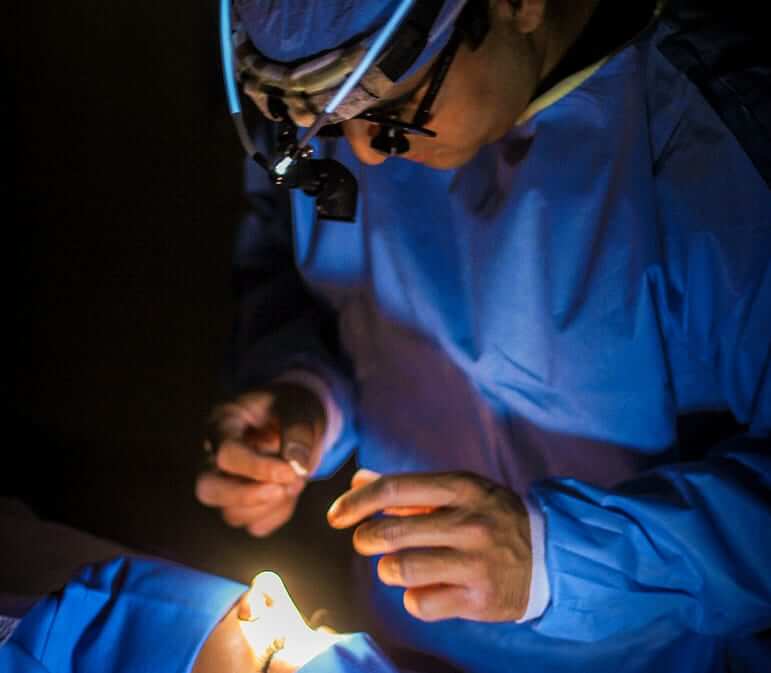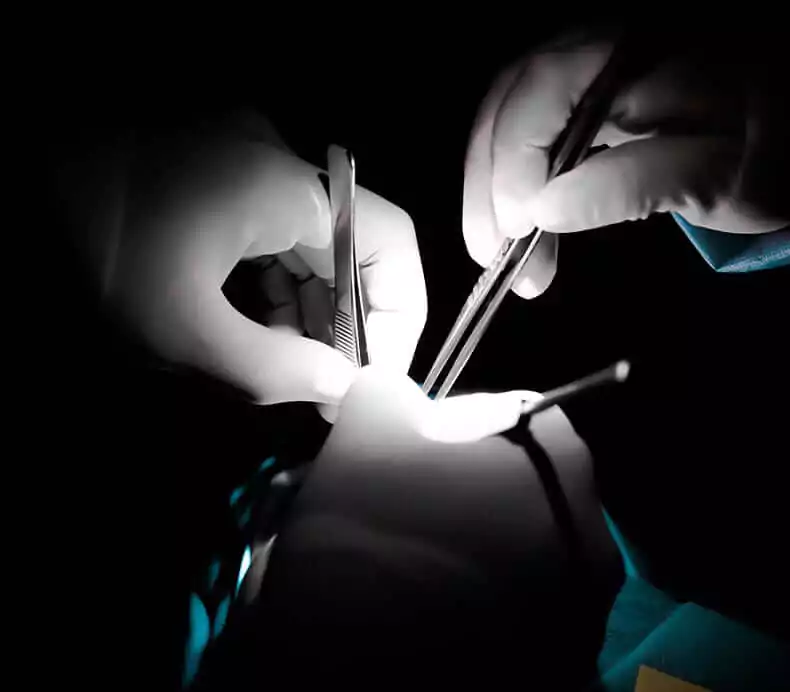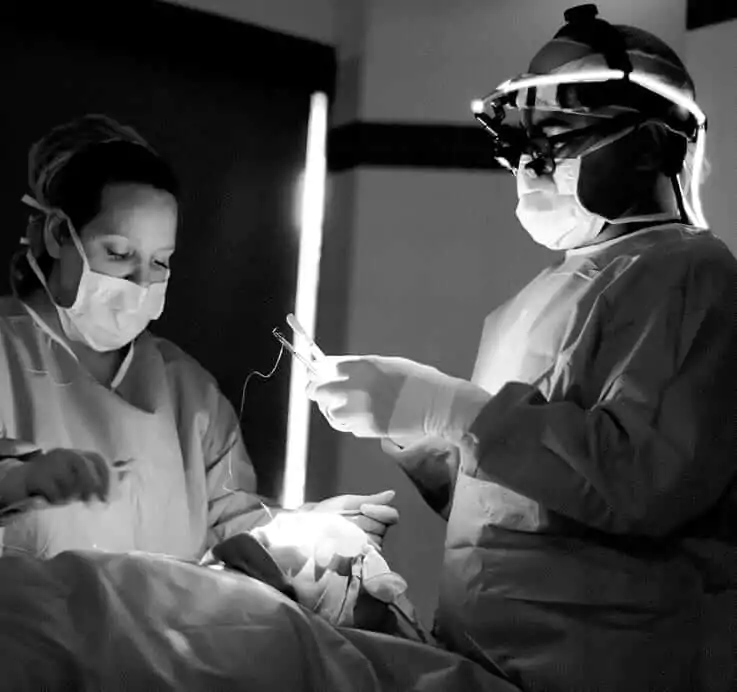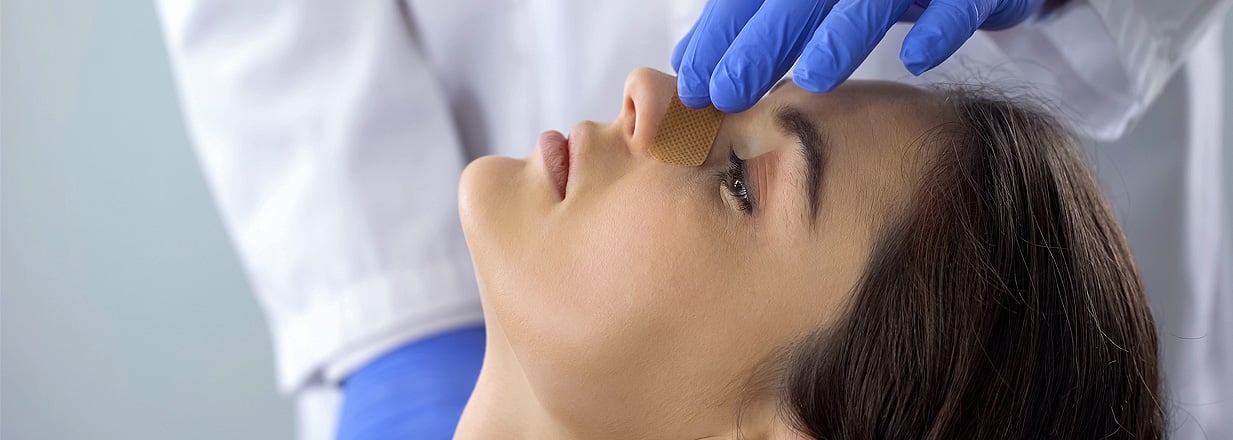Scarless Functional Rhinoplasty Q & A
Learn more about the 3 most common causes of difficulty breathing through your nose.

What are the benefits of a functional rhinoplasty?
A functional rhinoplasty is specifically focused on improving how your nose functions. Whether there is a problem with breathing, a blockage in any part of the nasal structure, or a broken nose due to injury, a functional rhinoplasty is crucial in addressing any of these issues. It can also be done scarless — meaning your nose won’t incur permanent scars after the procedure.
A functional rhinoplasty that adheres to the scarless nose method makes careful and changes to the nasal structure. As a highly trained and experienced surgeon, Dr. Deepak Dugar identifies the root cause of breathing problems and matches it with the appropriate solution:
- A deviated septum is addressed with a septoplasty procedure
- Enlarged or abnormal turbinates are addressed with either removing a specific turbinate (superior, middle, and inferior) or operating on the mucosa of the affected turbinate
- Nasal valve collapse can be addressed with creating a cartilage graft
- Allergies are typically addressed through prescribed medication
What is a deviated nasal septum and how can septoplasty fix it?
The nasal septum is the inner wall that separates the right and left side of the nose. It is normally straight and is made up of both cartilage and bone. When an undue amount of physical trauma is applied, the septum becomes bent and the nose will often look crooked. Apart from appearing unpleasant, a deviated septum can seriously hamper breathing ability.
Not all cases will be severe enough that surgery is required immediately. Some noses naturally have a deviated septum, albeit of a milder degree. Many cases often come to light when patients reach old age and have trouble taking in air through their nostrils.
For severe cases of deviated nasal septum, especially ones that are a result of an accident or blunt force trauma, time is of the essence to repair the damage.
During a septoplasty, Dr. Dugar uses precise incisions inside the nose to access the deviated portions of septal cartilage and bone. He then straightens these deviated portions in order to regain stability. He may also remove any obstruction (e.g., bits of broken bone and cartilage) that may hamper breathing. Some of the pieces of bone and cartilage can be used to build a graft to further strengthen the newly repaired nose.
Throughout the septoplasty Dr. Dugar will make use of scarless nose techniques to avoid leaving permanent scars.

What causes enlarged turbinates?
The turbinates are small, finger-shaped structures inside your nose that assist in cleansing and humidifying air. Each person has three turbinates: superior, middle, and inferior. These areas are essential in transporting air to the back of the throat and eventually into the lungs, where oxygen is offloaded.
However, problems arise when the turbinates become enlarged. This can be triggered by a number of things, including allergies, infection, and inherent anatomical anomalies present since birth. An enlarged turbinate can cause nasal obstruction through excessive production of mucus. Difficulty breathing is one of the first signs of enlarged turbinates.
Dr. Deepak Dugar usually prescribes medication to treat cases which are caused by allergy. However, if the turbinates don’t reduce in size and don’t respond well to this initial treatment, surgery may be advised.
Turbinate surgery may include partial turbinectomy, submucosal resection, turbinate cautery, turbinate coblation, turbinate out fracture, or a combination of all of the above. In the capable hands of a leading scarless nose surgeon like Dr. Dugar, these procedures are very safe and won’t inflict scars.

How does closed rhinoplasty fix a nasal valve collapse?
The nose is composed of two nasal valves which are crucial for airflow intake. The external valve is mainly cartilage and located in the lower portion of the nose, made up of the nasal rim and columella (the visible cartilage that divides the nose into two sides). The internal valve is the upper portion and made up of entirely bone. It is located between the anterior septum and caudal lateral cartilage.
Both physical trauma and certain genetic variations are key factors in nasal valve collapse. Excessive force can severely damage the external or internal valve (sometimes both). Some people are congenitally predisposed to developing weak cartilage and over time, the overall nasal structure is unable to prevent the nasal valves from collapsing.
Moreover, the internal nasal valve is much more narrow than its counterpart and is situated in the bony part of the nose. As a result, major injury to this area often leads to a deviated septum.
Spreader graft placement in scarless rhinoplasty involves taking excess nose cartilage from the deviated portions of the nasal septum. These bits and pieces of cartilage are used to create grafts that can support the newly restored angle of the nasal valve. This procedure is an effective way to improve breathing problems caused by nasal valve collapse.
The placement and sculpting of spreader grafts are highly precise skills that are must-haves for a seasoned scarless nose surgeon.
Is functional rhinoplasty a good solution for nasal allergies?
Allergies are a common cause of nasal obstruction. In fact, 1 in 5 Americans suffer from a variety of allergies — all of which cannot be remedied in the surgical room. However, there is prescribed medication to help you treat and manage them.
While a non-surgical approach is best, you can still approach a nose specialist like Dr. Deepak Dugar to get a better understanding of your persistent allergies — especially if previous medical appointments didn’t yield helpful insights and advice. Left unmanaged, some allergies can lead to nasal mucosa inflammation and inferior turbinate hypertrophy. When these types of serious problems develop, surgery may be required to relieve severe nasal obstruction.
How much does functional rhinoplasty cost?
Rhinoplasties, whether they are of the open or closed procedure, cost anywhere between $6,000 to well over $19,000. The exact cost will depend on the nose problems that a patient may be experiencing, as well as their desired changes.
The price of a scarless nose job performed by the best surgeons in the world can go beyond $20,000 if the nose has been previously operated on and requires corrective surgery.
While it doesn’t come cheap, a functional rhinoplasty can be a pivotal event that greatly improves your quality of life. In the capable and experienced hands of Dr. Deepak Dugar, one of the most highly sought-after rhinoplasty surgeons, you can rest easy knowing that the operation will be executed with great care and impeccable attention to detail.





